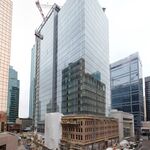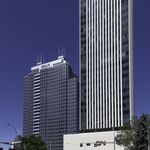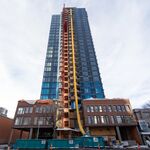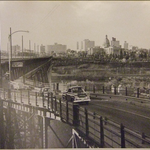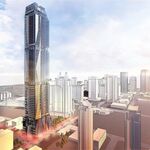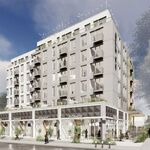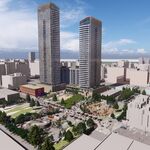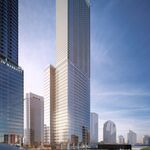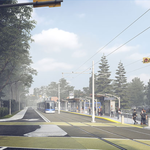In many ways, Edmonton's Queen Elizabeth II Planetarium represents Canada's neglect of Modernist buildings. Shuttered since 1983, the flying saucer-shaped structure is a sad reflection of our disregard for sites that haven't quite reached the undefined seniority or authenticity that the majority of protected buildings possess. "It's old, but not old enough," seems to be the prevailing sentiment when it comes to the notion of preserving most Modernist structures.
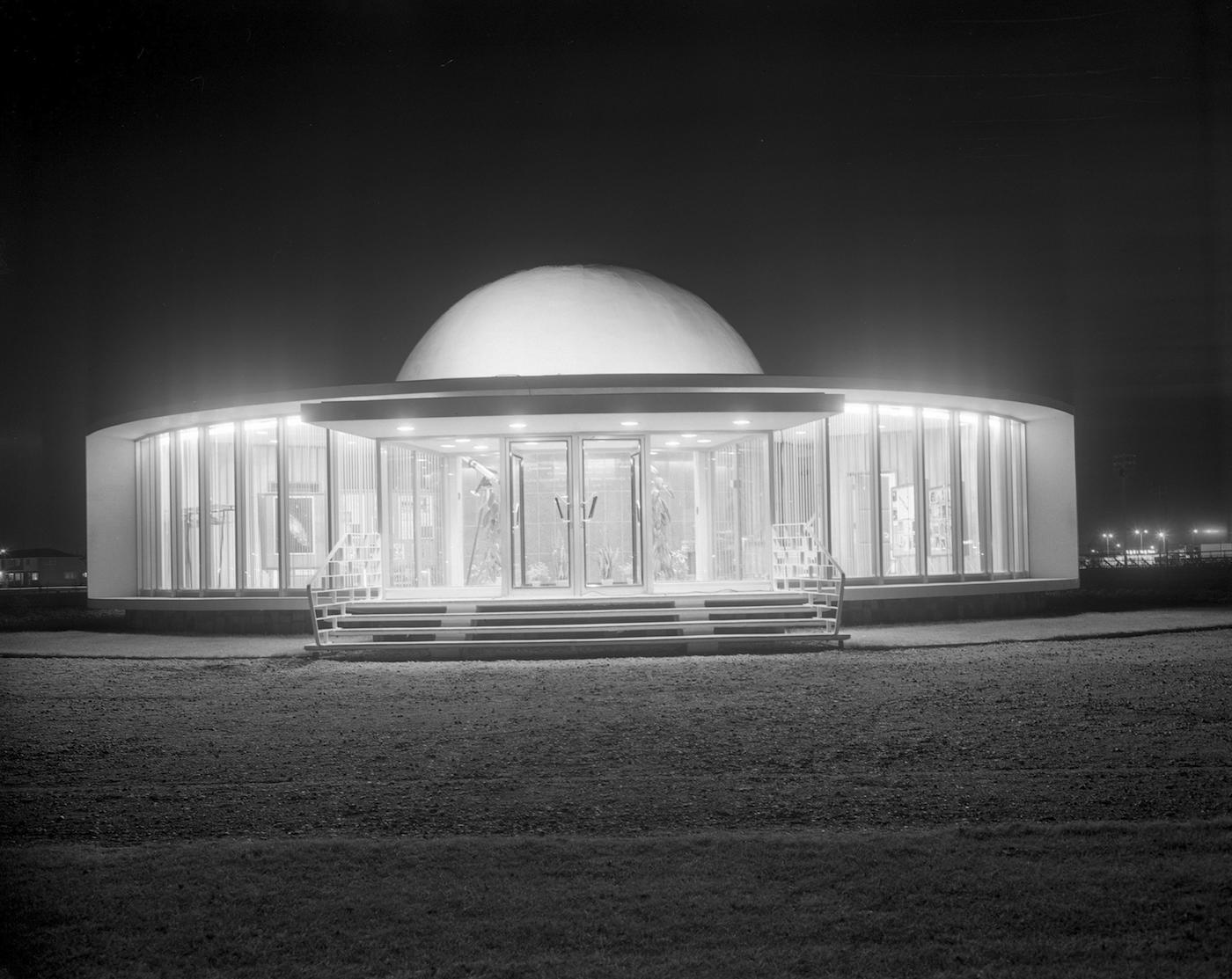 The planetarium emits a luminous glow in this September 1961 photo, image via Provincial Archives of Alberta
The planetarium emits a luminous glow in this September 1961 photo, image via Provincial Archives of Alberta
But there is hope for the building — and potentially other mid-century gems — after all. First, a history lesson. Canada's first public planetarium was designed by Walter Tefler and R. F. Duke for a prominent spot in Coronation Park. It was built to commemorate the July 21, 1959, visit of Queen Elizabeth II and Prince Philip, during which a tree was planted at the site. Construction began shortly thereafter, and the state-of-the-art complex officially opened to the public on September 22, 1960. Reaching a peak of 33,500 visitors in 1967, the planetarium became a showpiece for the park and a popular educational and entertainment resource in Edmonton.
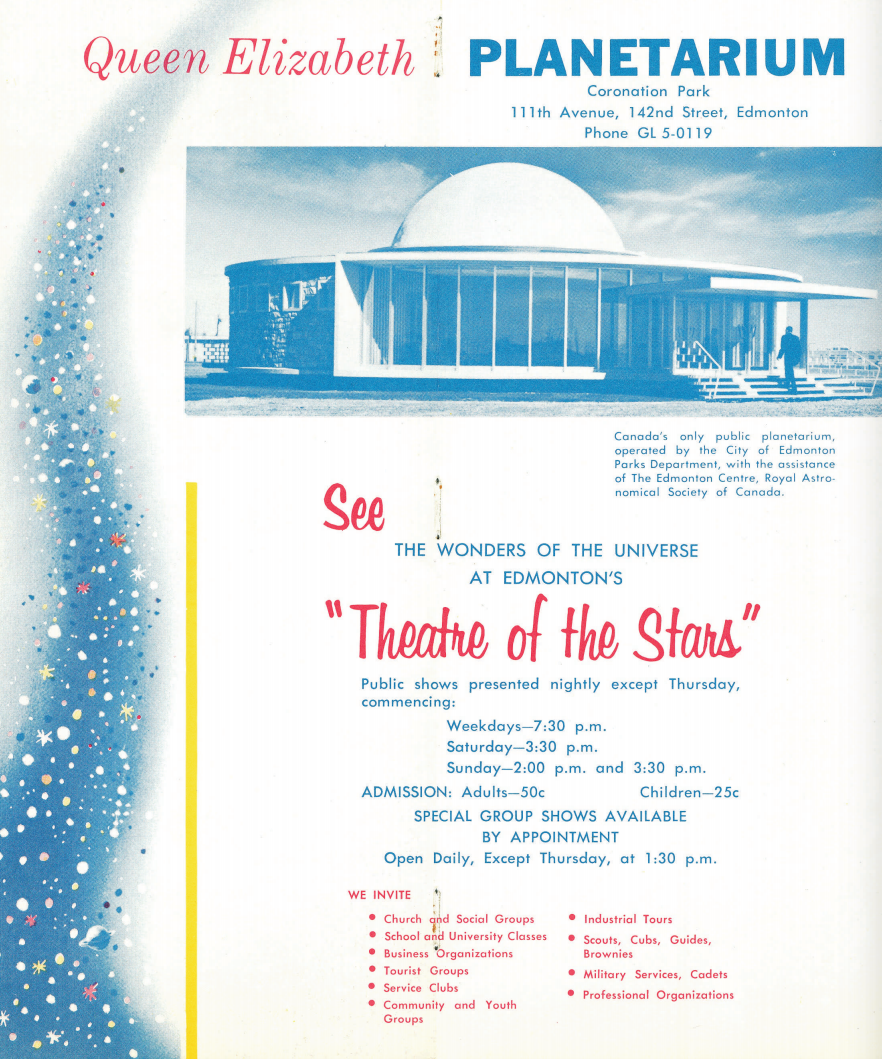 A 1961 brochure advertises the facility's programming, image via Royal Astronomical Society of Canada
A 1961 brochure advertises the facility's programming, image via Royal Astronomical Society of Canada
The opening of the nearby Edmonton Space and Science Centre — today the TELUS World of Science — sounded the death knell for the facility. Operations ceased on December 31, 1983, and the building has fallen into disrepair in the more than 30 years since. Fortunately, the City's interest in the space has been renewed, and a restoration project that recognizes its once-proud role as a community gathering place is currently underway. The project aims to enhance the function of the interior while protecting the historical and architectural importance of the exterior. In addition to the pursuance of long-deserved Municipal Heritage Resource designation, the initiative will install washrooms for park users and host public programming and events through TELUS World of Science's leasing of the space.
 The building's current state, image by Flickr user Kurt Bauschardt via Creative Commons
The building's current state, image by Flickr user Kurt Bauschardt via Creative Commons
Architecture | Tkalcic Bengert has been appointed the challenging task of restoring the building, whose key features include a concrete entrance canopy, a silver-painted (previously orange) dome, floor-to-ceiling glass, and gold anodized aluminum framing. With a construction start date tentatively set for early 2017, the building should be ready for a new generation of guests in 2018.
Have an idea for a future Throwback Thursday? Let us know by leaving a comment below!

 2.9K
2.9K 












